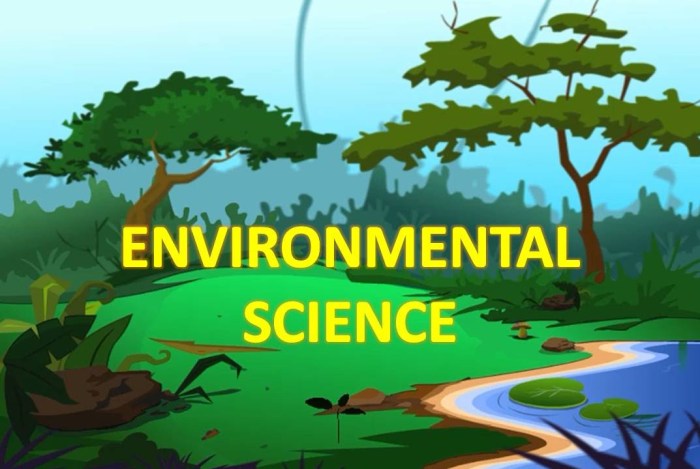Environmental science for the ap course 4th edition pdf – Environmental Science for the AP Course, 4th Edition PDF, provides students with a comprehensive overview of the AP Environmental Science course. This textbook is designed to help students understand the fundamental concepts of environmental science and prepare for the AP exam.
The book is divided into five units, each of which covers a different aspect of environmental science. Unit 1 provides an overview of environmental science and the AP Environmental Science course. Unit 2 explores the living world, including ecology, ecosystems, and biodiversity.
Unit 3 examines Earth’s systems and resources, including the atmosphere, hydrosphere, and lithosphere. Unit 4 discusses environmental quality, including pollution, climate change, and human health. Unit 5 explores environmental management, including sustainability, environmental policy, and environmental ethics.
Introduction
Environmental science is the study of the environment, and the interaction between humans and the environment. It is an interdisciplinary field that draws on the natural sciences, social sciences, and humanities to understand the complex relationships between humans and their surroundings.
Studying environmental science is important for several reasons. First, it helps us to understand the impact of human activities on the environment. Second, it helps us to develop strategies to protect the environment and mitigate the effects of human activities.
Third, it helps us to make informed decisions about how to use the Earth’s resources.
The AP Environmental Science course is designed to provide students with a comprehensive understanding of the environment. The course covers a wide range of topics, including ecology, ecosystems, Earth systems, resources, environmental quality, and environmental management.
The Living World

Ecology is the study of the interactions between organisms and their environment. Ecosystems are communities of living organisms and their physical surroundings. The different levels of ecological organization include individuals, populations, communities, ecosystems, and biomes.
Organisms interact with their environment in a variety of ways. They compete for resources such as food, water, and shelter. They also cooperate with each other to find food, raise young, and defend themselves from predators.
Interactions Between Organisms, Environmental science for the ap course 4th edition pdf
- Competition: Organisms compete for resources such as food, water, and shelter.
- Predation: One organism kills and eats another organism.
- Symbiosis: Two organisms live in close association with each other. Symbiosis can be mutualistic, commensalistic, or parasitic.
Earth Systems and Resources
The Earth’s systems interact with each other in a complex way. The atmosphere, hydrosphere, lithosphere, and biosphere are all interconnected and interdependent.
Sustainability is the ability to meet the needs of the present without compromising the ability of future generations to meet their own needs. Managing Earth’s resources sustainably is a challenge, but it is essential for the long-term health of the planet.
Challenges of Managing Earth’s Resources
- Population growth: The human population is growing rapidly, which is putting a strain on the Earth’s resources.
- Climate change: Climate change is altering the Earth’s climate, which is having a negative impact on ecosystems and human societies.
- Pollution: Pollution is contaminating the Earth’s air, water, and land, which is harming human health and ecosystems.
Environmental Quality

Environmental quality is a measure of the health of the environment. It is affected by a variety of factors, including pollution, climate change, and land use.
Pollution is the introduction of harmful substances into the environment. Pollutants can be classified as air pollutants, water pollutants, or land pollutants.
Effects of Environmental Pollution
- Air pollution can cause respiratory problems, heart disease, and cancer.
- Water pollution can cause waterborne diseases, such as cholera and typhoid fever.
- Land pollution can contaminate soil and groundwater, which can harm human health and ecosystems.
Environmental Management: Environmental Science For The Ap Course 4th Edition Pdf

Environmental management is the process of protecting the environment and mitigating the effects of human activities on the environment.
There are a variety of environmental management strategies, including pollution prevention, waste management, and land use planning.
Challenges of Implementing Environmental Management Strategies
- Cost: Implementing environmental management strategies can be expensive.
- Political will: There may be a lack of political will to implement environmental management strategies.
- Public support: Public support for environmental management strategies is essential for their success.
Popular Questions
What is environmental science?
Environmental science is the study of the environment, including the physical, chemical, and biological components, and their interactions.
What is the AP Environmental Science course?
The AP Environmental Science course is a college-level course that introduces students to the fundamental concepts of environmental science. The course covers a wide range of topics, including ecology, ecosystems, pollution, climate change, and environmental policy.
What is the AP Environmental Science exam?
The AP Environmental Science exam is a three-hour exam that tests students’ knowledge of the course content. The exam is divided into two sections: a multiple-choice section and a free-response section.